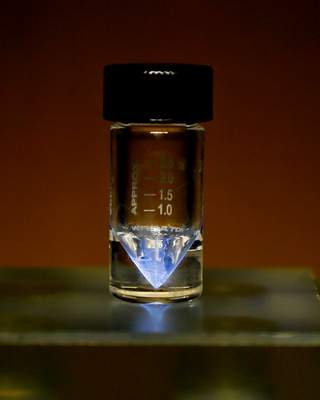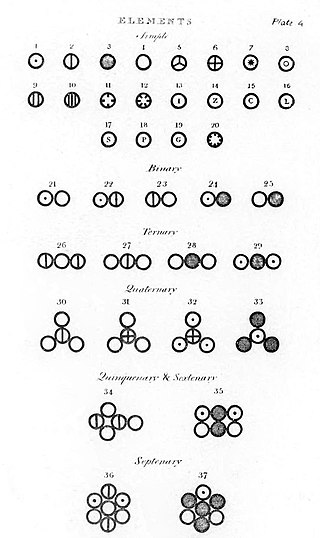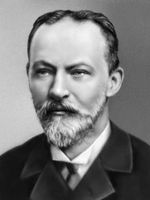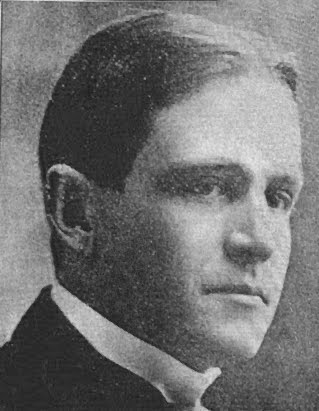Related Research Articles

Actinium is a chemical element with the symbol Ac and atomic number 89. It was first isolated by Friedrich Oskar Giesel in 1902, who gave it the name emanium; the element got its name by being wrongly identified with a substance André-Louis Debierne found in 1899 and called actinium. Actinium gave the name to the actinide series, a set of 15 elements between actinium and lawrencium in the periodic table. Together with polonium, radium, and radon, actinium was one of the first non-primordial radioactive elements to be isolated.
The actinide or actinoid series encompasses the 15 metallic chemical elements with atomic numbers from 89 to 103, actinium through lawrencium. The actinide series derives its name from the first element in the series, actinium. The informal chemical symbol An is used in general discussions of actinide chemistry to refer to any actinide.
A chemical element is a chemical substance that cannot be broken down into other substances. The basic particle that constitutes a chemical element is the atom, and each chemical element is distinguished by the number of protons in the nuclei of its atoms, known as its atomic number. For example, oxygen has an atomic number of 8, meaning that each oxygen atom has 8 protons in its nucleus. This is in contrast to chemical compounds and mixtures, which contain atoms with more than one atomic number.

Francium is a chemical element with the symbol Fr and atomic number 87. It is extremely radioactive; its most stable isotope, francium-223, has a half-life of only 22 minutes. It is the second-most electropositive element, behind only caesium, and is the second rarest naturally occurring element. Francium's isotopes decay quickly into astatine, radium, and radon. The electronic structure of a francium atom is [Rn] 7s1; thus, the element is classed as an alkali metal.

The noble gases make up a class of chemical elements with similar properties; under standard conditions, they are all odorless, colorless, monatomic gases with very low chemical reactivity. The six naturally occurring noble gases are helium (He), neon (Ne), argon (Ar), krypton (Kr), xenon (Xe), and the radioactive radon (Rn).

Promethium is a chemical element with the symbol Pm and atomic number 61. All of its isotopes are radioactive; it is extremely rare, with only about 500–600 grams naturally occurring in Earth's crust at any given time. Promethium is one of only two radioactive elements that are followed in the periodic table by elements with stable forms, the other being technetium. Chemically, promethium is a lanthanide. Promethium shows only one stable oxidation state of +3.

Protactinium is a radioactive chemical element with the symbol Pa and atomic number 91. It is a dense, silvery-gray actinide metal which readily reacts with oxygen, water vapor and inorganic acids. It forms various chemical compounds in which protactinium is usually present in the oxidation state +5, but it can also assume +4 and even +3 or +2 states. Concentrations of protactinium in the Earth's crust are typically a few parts per trillion, but may reach up to a few parts per million in some uraninite ore deposits. Because of its scarcity, high radioactivity and high toxicity, there are currently no uses for protactinium outside scientific research, and for this purpose, protactinium is mostly extracted from spent nuclear fuel.

Thorium is a weakly radioactive metallic chemical element with the symbol Th and atomic number 90. Thorium is light silver and tarnishes olive gray when it is exposed to air, forming thorium dioxide; it is moderately soft and malleable and has a high melting point. Thorium is an electropositive actinide whose chemistry is dominated by the +4 oxidation state; it is quite reactive and can ignite in air when finely divided.

Carl Auer von Welsbach, who received the Austrian noble title of Freiherr Auer von Welsbach in 1901, was an Austrian scientist and inventor, who separated didymium into the elements neodymium and praseodymium in 1885. He was also one of three scientists to independently discover the element lutetium, separating it from ytterbium in 1907, setting off the longest priority dispute in the history of chemistry.
A period 7 element is one of the chemical elements in the seventh row of the periodic table of the chemical elements. The periodic table is laid out in rows to illustrate recurring (periodic) trends in the chemical behavior of the elements as their atomic number increases: a new row is begun when chemical behavior begins to repeat, meaning that elements with similar behavior fall into the same vertical columns. The seventh period contains 32 elements, tied for the most with period 6, beginning with francium and ending with oganesson, the heaviest element currently discovered. As a rule, period 7 elements fill their 7s shells first, then their 5f, 6d, and 7p shells in that order, but there are exceptions, such as uranium.

Praseodymium is a chemical element with the symbol Pr and the atomic number 59. It is the third member of the lanthanide series and is considered one of the rare-earth metals. It is a soft, silvery, malleable and ductile metal, valued for its magnetic, electrical, chemical, and optical properties. It is too reactive to be found in native form, and pure praseodymium metal slowly develops a green oxide coating when exposed to air.

The periodic table is an arrangement of the chemical elements, structured by their atomic number, electron configuration and recurring chemical properties. In the basic form, elements are presented in order of increasing atomic number, in the reading sequence. Then, rows and columns are created by starting new rows and inserting blank cells, so that rows (periods) and columns (groups) show elements with recurring properties. For example, all elements in group (column) 18 are noble gases that are largely—though not completely—unreactive.

Clemens Alexander Winkler was a German chemist who discovered the element germanium in 1886, solidifying Dmitri Mendeleev's theory of periodicity.

This timeline of chemistry lists important works, discoveries, ideas, inventions, and experiments that significantly changed humanity's understanding of the modern science known as chemistry, defined as the scientific study of the composition of matter and of its interactions.

Bohuslav Brauner was a Czech chemist from the University of Prague, who investigated the properties of the rare earth elements, especially the determination of their atomic weights. Brauner predicted the existence of the rare earth element promethium ten years before the existence of the gap was confirmed experimentally. In the 1880s, when he already had started lecturing in Prague, he still competed internationally in cycling races.
Fred C. Allison was an American physicist. He developed a magneto-optic spectroscopy method that became known as the Allison magneto-optic method. He claimed to have discovered two new elements using this method. He taught at the Auburn University Physics Department for more than thirty years.

Charles Baskerville was an American chemist. He announced the discovery of two new elements which claimed to have separated from thorium. Carolinium and berzelium later were identified to be identical with thorium.

Charles James was a chemist of British origin working in the United States. He became a professor and head of the chemistry department at the New Hampshire College of Agriculture and the Mechanic Arts in Durham, New Hampshire, US.
Actinium compounds are compounds containing the element actinium (Ac). Due to actinium's intense radioactivity, only a limited number of actinium compounds are known. These include: AcF3, AcCl3, AcBr3, AcOF, AcOCl, AcOBr, Ac2S3, Ac2O3, AcPO4 and Ac(NO3)3. Except for AcPO4, they are all similar to the corresponding lanthanum compounds. They all contain actinium in the oxidation state +3. In particular, the lattice constants of the analogous lanthanum and actinium compounds differ by only a few percent.
References
- ↑ Baskerville, Charles (1901). "On the Existence of a new Element associated with Thorium". Journal of the American Chemical Society. 23 (10): 761–764. doi:10.1021/ja02036a004.
- ↑ Baskerville, Charles (1904). "Carolinium, Berzelium, Thorium". Journal of the American Chemical Society. 26 (8): 922. doi:10.1021/ja01998a003.
- ↑ Brauner, Bohuslav; Baskerville, Charles (June 1904). "The Complex Nature of Thorium". Science. 19 (493): 892–893. Bibcode:1904Sci....19..892B. doi:10.1126/science.19.493.892. ISSN 0036-8075. PMID 17770214.
- ↑ Meyer, Richard Joseph; Gumperz, A. (1905). "Zur Frage der Einheitlichkeit des Thoriums". Berichte der Deutschen Chemischen Gesellschaft. 38: 817–825. doi:10.1002/cber.190503801140.
- ↑ Wells, H. G. (1914). "2". The World Set Free.
[T]he new bombs that would continue to explode indefinitely...